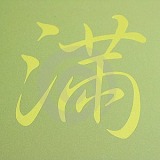History
The Japanese and Chinese languages are different and alike at the same time. Their writing systems are a big part of the language. Each language has many characters, and each character belongs to one of the many systems and each has a History behind it.
To learn about your options on the poll below, read the passage that follows.
History of the systems
Every language influences one another. Japanese and Chinese influence each other in many ways. The history of the Chinese writing systems is similar to the history of the Japanese writing systems. This is because the Japanese were influenced on the making of their language by the Chinese.
The system Jiaguwen was found to be a type of Bone script. The system's history is a story from 1899. In 1899, someone ordered "dragon bone" from the pharmacy. When they collected it, they realized it had ancient writing on it. It turned out the writing was Chinese. The dragon bone ended up being bone and shell. People collected this bone and shell and found 154,600 pieces, and 4,568 had pictographic signs. While they were trying to decode the messages, they gave the anicient writing a name; Jiaguwen. Up to now, we have identified about 1,700 pictographic signs.
Among the pictographs, abstrat meanings were found. But while the decoding was still going on, a women by the name Li Yun, made a decipher for Jiaguwen on the computer. It was a much easier way to decode.
After many studies, Jiaguwen was found out to be the first Chinese writing!
The writing system Kaishu, was the standard script. While writing was developing more and more in China, it was becoming more regular, but many thought it was too complicated. So then an emperor decided to pass a decree for a new form of writing. He named the system Kaishu, from the root word Kai, which means model to imitate.
The written language that was said to be to complicated was called Lishu. It had many complicated lines. But Kaishu has vertical and horitzontal lines that make it easier for childern and non-educated people to write. It also allows the Chinese to be quicker writers.
As the decree grew, the emperor's list became longer. He made it so that using the simple words you could easily create others. There were eight basic lines; horizontal, vertical, line curve to left, line curve to right, point, hook, line rising to right, and the broken line. But if you took these lines, you could make nine compound lines to complete each character of the Chinese language.
The emperor ended up making a manual of his new and improved language. Now, all of the society could use the same writing system. Liu Xie was the emperors name, and he was the creator of the Chinese standard script.
Some other writing innovations that have interesting histories are: Ritual Bronze Vessel Script, Small Seal Script, Clerical Script, Cursive Script, Semi-cursive Script.
The system Jiaguwen was found to be a type of Bone script. The system's history is a story from 1899. In 1899, someone ordered "dragon bone" from the pharmacy. When they collected it, they realized it had ancient writing on it. It turned out the writing was Chinese. The dragon bone ended up being bone and shell. People collected this bone and shell and found 154,600 pieces, and 4,568 had pictographic signs. While they were trying to decode the messages, they gave the anicient writing a name; Jiaguwen. Up to now, we have identified about 1,700 pictographic signs.
Among the pictographs, abstrat meanings were found. But while the decoding was still going on, a women by the name Li Yun, made a decipher for Jiaguwen on the computer. It was a much easier way to decode.
After many studies, Jiaguwen was found out to be the first Chinese writing!
The writing system Kaishu, was the standard script. While writing was developing more and more in China, it was becoming more regular, but many thought it was too complicated. So then an emperor decided to pass a decree for a new form of writing. He named the system Kaishu, from the root word Kai, which means model to imitate.
The written language that was said to be to complicated was called Lishu. It had many complicated lines. But Kaishu has vertical and horitzontal lines that make it easier for childern and non-educated people to write. It also allows the Chinese to be quicker writers.
As the decree grew, the emperor's list became longer. He made it so that using the simple words you could easily create others. There were eight basic lines; horizontal, vertical, line curve to left, line curve to right, point, hook, line rising to right, and the broken line. But if you took these lines, you could make nine compound lines to complete each character of the Chinese language.
The emperor ended up making a manual of his new and improved language. Now, all of the society could use the same writing system. Liu Xie was the emperors name, and he was the creator of the Chinese standard script.
Some other writing innovations that have interesting histories are: Ritual Bronze Vessel Script, Small Seal Script, Clerical Script, Cursive Script, Semi-cursive Script.

